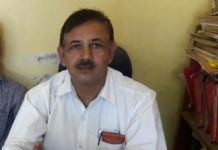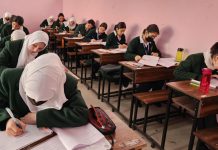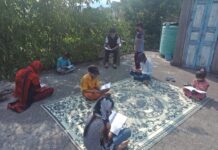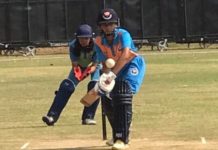Jammu and Kashmir saw political turmoil in 2018 after the PDP-BJP coalition collapsed, necessitating imposition of Governor’s rule in the state and subsequently President’s rule, and was also rocked by a horrific incident of rape and murder of an eight-year-old girl.
Though militant-related activities in the state resulted in the loss of lives of many, officials claimed there was a marked improvement in the security scenario in the Kashmir Valley ever since the imposition of Governor’s rule.
The political scene in the state remained hot since the beginning of the year with the then chief minister Mehbooba Mufti sacking her finance minister Haseeb Drabu in March for going against the PDP line and asserting that Jammu and Kashmir shouldn’t be seen as a conflict state or a political problem, but as a society with social issues.
On April 30, Mehbooba carried out a reshuffle in her council of ministers to fill some of the vacancies as both the PDP and BJP got in some new faces. The new ministers included Kavinder Gupta, who swapped the post of Assembly speaker with Nirmal Singh for becoming the deputy chief minister.
As the new ministers must have been still settling in their new jobs, the BJP, in a sudden but not unexpected move, decided to pull out of the coalition government with the PDP and also withdraw support from the government.
The then Governor N N Vohra, who was six days away from completing his second term at the Raj Bhawan in Srinagar, decided to impose Governor’s rule in the state. He, however, kept the assembly in suspended animation as outgoing chief minister Mehbooba had not made any recommendation for dissolution of the the lower house of the legislature.
The elected government fell on June 19.
After completion of six months of Governor’s rule in Jammu and Kashmir on December 19, the state came under President’s rule from midnight of December 20.
President Ram Nath Kovind signed the proclamation for imposition of central rule in the state after receiving a report from Governor Malik and after considering it and other information.
In January, the eight-year-old girl belonging to a Muslim nomadic family was found murdered in Kathua district of the state.
The girl was reported missing by her family on January 10 but was found dead eight days later. Post-mortem report said she had been repeatedly raped under the influence of sedatives and later killed by her tormentors.
While not much headway was made in the early stages of police investigation, the government ordered a crime branch probe into the murder. Investigations revealed gory details of the crime against the minor girl, shaking the nation and leading to widespread protests demanding stern punishment to those involved in the crime.
BJP’s Chaudhary Lal Singh and C P Ganga, who were ministers then, participated in a rally organised in support of the accused persons in Kathua and demanded a CBI probe into the matter. This led to quite a controversy.
However, Mehbooba, as chief minister, put her foot down and resisted all pressures from her alliance partner for recommending a CBI probe.
As the alliance partners were heading for a showdown, the BJP high command defused the situation, forcing Singh and Ganga to resign from the council of ministers.
However, Singh — a former Congress Lok Sabha member who defected to BJP after he was denied ticket in 2014 Lok Sabha polls — organised several rallies, criticising the PDP-led government.
With the security situation in the Valley deteriorating, the BJP chose to withdraw from the government.
The fall of the government led to a rebellion within the PDP as a section of leaders revolted against Mehbooba’s leadership accusing her of nepotism and favouritism.
Several of these leaders gravitated towards Peoples Conference, which had only two MLAs in the 87-member house but enjoyed support of the BJP, in an attempt to form a fresh government by getting 19 MLAs from the PDP to switch sides in order to avoid attracting anti-defection law.
Prominent among those who openly rebelled against Mehbooba were influential Shia leader Imran Ansari, his uncle Abid Ansari, MLA Tangmarg Mohammad Abbas Wani, MLA Baramulla Javaid Beigh, MLCs Yasir Reshi and Saifuddin Bhat.
Even senior PDP leader Muzaffar Beigh put the party on notice saying he was not consulted on key issues including the PDP decision to boycott the urban local bodies polls. He was, however, mollified by Mehbooba by appointing him party patron.
Several other leaders have since left the party with Drabu, former law minister Basharat Bukhari and Peer Mohammad Hussain being the notable ones.
Bukhari and Hussain have since joined PDP’s arch rival National Conference.
As Vohra completed two highly successful terms as governor, he was given a two-month extension by the Centre to avoid any disruptions in the Amarnath Yatra.
On August 21, Bihar Governor Satya Pal Malik was named to take full charge of Jammu and Kashmir — the first political person to head Raj Bhawan since the days of Jagmohan in 1990.
Malik decided to hold ULB and panchayat polls in the state despite most of the political parties advising against it in view of the prevailing security situation.
As the governor’s administration refused to postpone the elections, the National Conference and the PDP decided to stay away from the elections. The boycott only helped the BJP candidates.
So poor was the participation in the municipal polls, that one third of seats in the valley failed to find a candidate while many more wards were won uncontested. The poll percentage in the valley was an abysmal 4.2 per cent compared to nearly 40 per cent 13 years ago when the last such exercise was conducted.
The panchayat elections, however, saw better participation of the electorate as there was a 41.3 per cent turnout. In Jammu division, it was business as usual as high turnout marked another election in the region. PTI















































